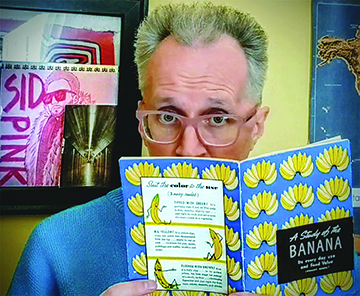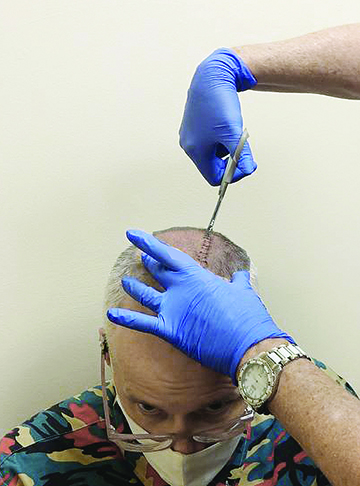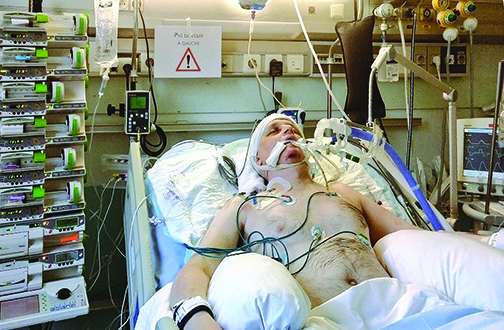“The wounds remain. In time, the mind, protecting its sanity, covers them with scar tissue and the pain lessens. But it is never gone.”
- Rose Fitzgerald Kennedy
On February 17, 2020, Jason Stoval — aka Sid Pink — landed in Paris for a close friend’s 40th birthday celebration. Stoval is an acclaimed Denver-based producer, director, filmmaker, musician, writer, actor and MC. The occasion was to span across numerous days, as a small, tight-knit group planned to meet for dinner, then depart the next morning for some high-end winter recreation at the Swiss border. The trip was beyond the scope of Sid’s finances but, ever the innovative shoestring artist, he found a way to make it work. His role was to be that of a babysitter for a friend in the group’s four-year-old daughter in exchange for travel and accommodations. He would forgo the alpine antics and instead, take care of the youngster all day while the grown-ups whooped it up on the slopes for a week. Fair trade.
A Mysterious Detour
On his first evening in the City of Light, however, things went dark. Sid was the senior member of the group and was determined to not begin his adventure with a hangover. So, he left dinner early and headed back toward his hotel to get a good night’s sleep. GPS records of his cell phone movements, however, show a detour to a local lounge and then a second subsequent location. He eventually got into an Uber around 3 a.m. (not called from his phone) and was dropped off in an abandoned parking lot. The driver, who was not “on the clock,” was quoted by authorities as saying, “There was too much blood.” Somewhere between leaving the restaurant around 11 p.m. and getting into the Uber, he had sustained a severely traumatic, blunt-force injury to the left side of his head. Robbery was ruled out due to the fact that he still had his wallet, bank card, phone, etc. Being an American tourist, however, chances of authorities launching an investigation were slim. Speculation points to vindictive locals looking to maul an unsuspecting tourist, but the truth may never be known.
Around 6 a.m., Sid was discovered in said parking lot, picked up by an ambulance and rushed to the Sainte-Anne Hospital. There, doctors performed emergency surgery to remove numerous skull fragments which were embedded in his brain. After surgery, Sid was induced into a coma in order to minimize the swelling in his skull. By now, word of the incident had reached back home to Sid’s family and friends in Colorado.
It Takes A Village
Swift action was taken to start a GoFundMe campaign in order to handle what would no doubt be a lengthy and awfully expensive undertaking to pay for his medical expenses in France, and somehow get him back home. Funds were quickly raised, as Sid has many dozens of friends and colleagues across the Mile High City and beyond. Soon, his father Toby was en route to Paris to be at his son’s side. Sid explains his father’s predicament:
“… as a Wyoming native, staying in a big town [and no French spoken], he had it as bad as I did.”
As is common with most traumatic brain injuries (TBIs), Sid has no recollection of the event or anything else that took place several days prior. He remembers nothing of his flight overseas, his arrival in Paris or the evening of the TBI. In fact, his first tangible memory, as fuzzy as it is surreal, occurs more than two weeks afterward, as doctors elected to slowly bring him out of the coma.
Strange New Reality
Sid remembers getting up from the hospital bed, going to the bathroom and looking in the mirror. He was met by a vaguely familiar figure who was somehow a lot thinner and, ahem, missing part of his head.
Sid recalls: “‘Man’ I thought to myself, ‘last night musta been a wild one.’ Clearly, I didn’t really ‘get’ much at that moment. But immediately after, I also noticed that I was thin [I’d lost 32 pounds during the coma]. I twisted to the side and said, ‘Damn — you look good.’ So, hey — an upside. During my last week in the hospital after waking up, I slowly realized that the crazy hole [in my head] and losing 30+ pounds probably didn’t happen in one day.” This upbeat, glass-half-full attitude would be the defining theme for Sid’s ongoing recovery and the return to his life in Colorado — nearly 5,000 miles away.
As his memory and speaking ability became more apparent, so too did the sharpening curve of the Coronavirus. Soon, it was clear that a travel ban was imminent, and with just days before it went into place on March 16, Sid and Toby made their exodus to America by the slimmest of margins. Once again, Sid’s optimism shines a light on the bright side: “It [the timing] was actually really ‘lucky’ — if it [the TBI] happened even a few days later, I would have been in lockdown in Paris for months, probably.”
A Sharp Learning Curve
Sid would soon discover that the left hemisphere of the brain is where the centers for speech and communication are located. From the get-go, he found he was unable to speak, with the exception of the words “yes” and “no.” This condition is common with TBIs, and is known as Aphasia, described by clinicians as when a person knows what they want to say, but is unable to find the words.
Sid’s path back to relative normalcy was through a comprehensive regimen of memory and speech therapy, hand/eye coordination therapy and visual attention training. These are comprehensive disciplines designed to spark neuroplasticity so that the brain can re-train itself.
First, there is the auditory recall of words. For example, a series of unrelated words are spoken aloud by the therapist, followed by five minutes of unrelated conversation, then Sid is prompted to recall those initial three words. Next, there are timed exercises involving a series of 30 or so images containing shapes. “If there’s a triangle, that’s your ‘hand,’ a circle is your ‘foot,’” Sid explains. “Each image shows one or both in it, and if it is on the left or right of a line. The exercise is to see how fast you can look at these symbols and move your hand, foot, or both while determining if they are to the right or to the left of a center line.” Another aspect of Sid’s therapy involves visual stimuli which requires the eyes to react quickly in order to recognize certain properties that are associated with movement such as walking, flying or motorized travel.
Sid continues: “The biggest thing [challenge] is with speech and memory. I need to work on remembering words, including names of actors, or bands, or movie names. If I see a picture of them, or hear someone else say the name, I know all those things in my brain. The tricky part for me is to say: ‘list all the words that start with R in 60-seconds’ or ‘name all the actors you can think of in 60-seconds.’ Oftentimes, that minute might only yield five to 10 words that I can think of. But again, if you showed me a list of 500 words that start with ‘R,’ I know all of them.” Sid continues his daily speech and memory exercises and meets with a therapist twice a week. Although there is no guarantee he will fully recover, he is determined to try.
Keep Looking Up
Moving forward, Sid’s gradual return to cognition and communicative proficiency can be attributed to a phenomenon called neuroplasticity. Unlike other organs, the brain has the unique ability to change its function and structure based on input and stimulus. Even though part of his brain tissue was lost, speech therapy has caused the remaining synapses and neurons to “rewire” their c
onnectivity and help Sid regain some of his former ebullience. Once again, his optimism kicks in: “Whatever happened to me, it sucked, for sure — but I am incredibly lucky in so many ways. I have both of my eyes, nostrils [though I lost my ability to smell] and all my teeth. I can walk, use my arms, hands, back — all the big ones. My brain is screwed up, but many people [TBI victims] can’t speak, can’t understand, can’t remember — anything. They can’t write or read. Some people’s injury isn’t just aphasia, it’s amnesia, or damage that erases their knowledge, their ideas, their ability to walk or cook meals or dress themselves.”
Sid’s prognosis is speculative, and he knows he will never again be fully normal. Regardless, he is determined to forge forth into his art at whatever capacity possible. Currently, he is riding high on the recent release of a video for the song “So This is Romance” by his band Psychology Bag, www.psychologybag.com. The piece is one of many results of an ongoing project with Sid’s music partner and artistic wunderkind Kyle Jones. In it, Sid’s injuries are slowly, methodically revealed and, alas, the viewer is given several full glimpses of an artist singing (to the best of his current ability) with a somewhat-healed, extremely dramatic head injury.
The video is a deeply moving, profoundly courageous piece of performance art — and a testament to Sid’s unrelenting pursuit of artistic honesty. Indeed, the video and Sid’s overarching positive attitude are welcome victories in a year of unprecedented loss and tragedy. In closing, Mr. Sid Pink attests: “And on the ‘lucky spin’ … if I got picked up in an ambulance, given a brain/skull surgery, and stayed at the hospital for a month with a billion medications, and coma sleep and all that here in the USA … [it] would seriously have cost between one and two million dollars. It would have ruined me, my family, and friends. For whatever it was, the fact that it happened in a place with socialized medicine was lucky as hell.”
Sid’s GoFundMe campaign is still underway, as there are ongoing costs for his treatment, therapy and language sessions. Anyone wanting to donate can do so here: https://www.gofundme.com/f/the-recovery-fund-for-jason-stoval-sid-pink





